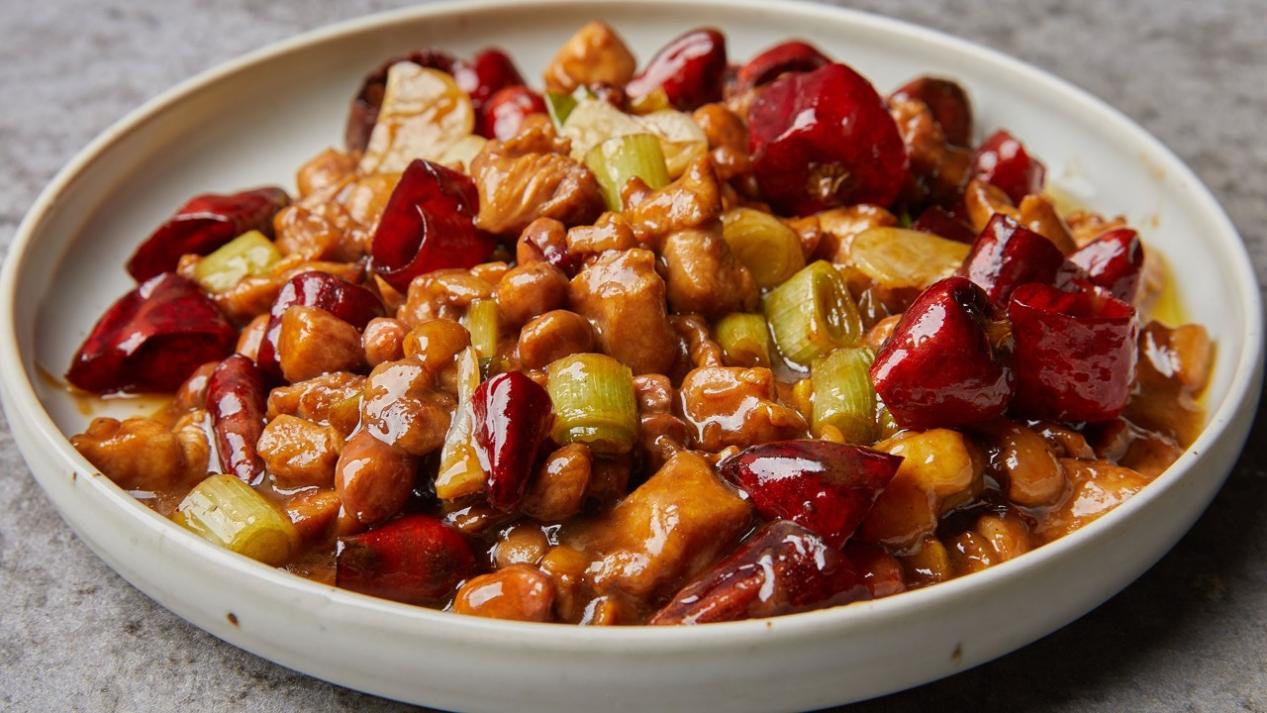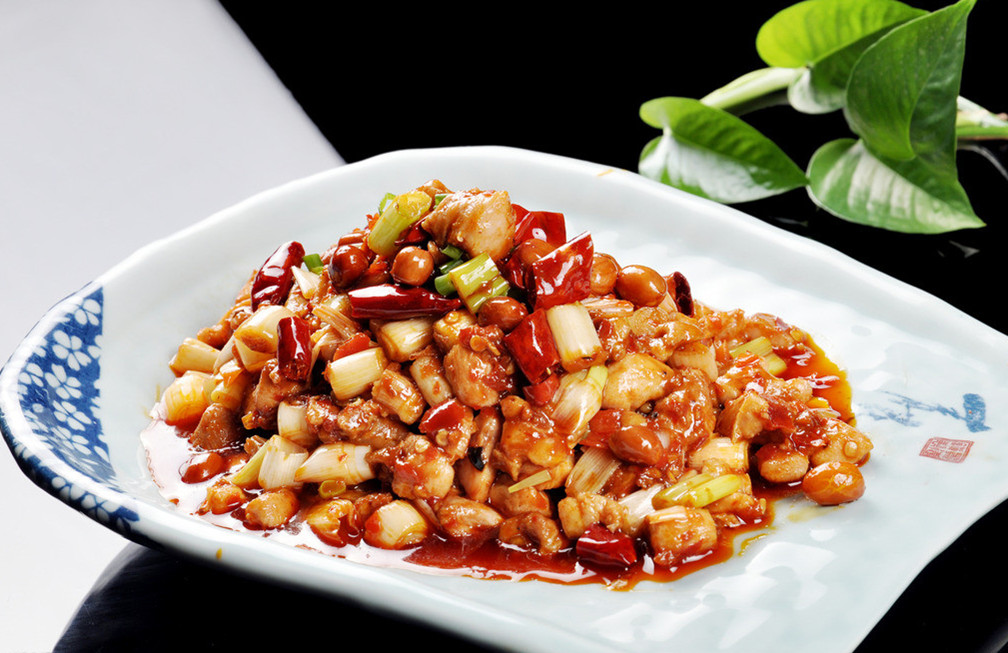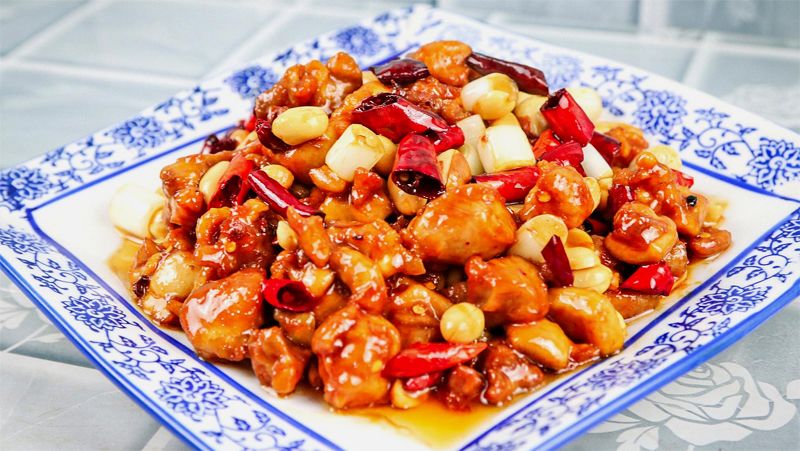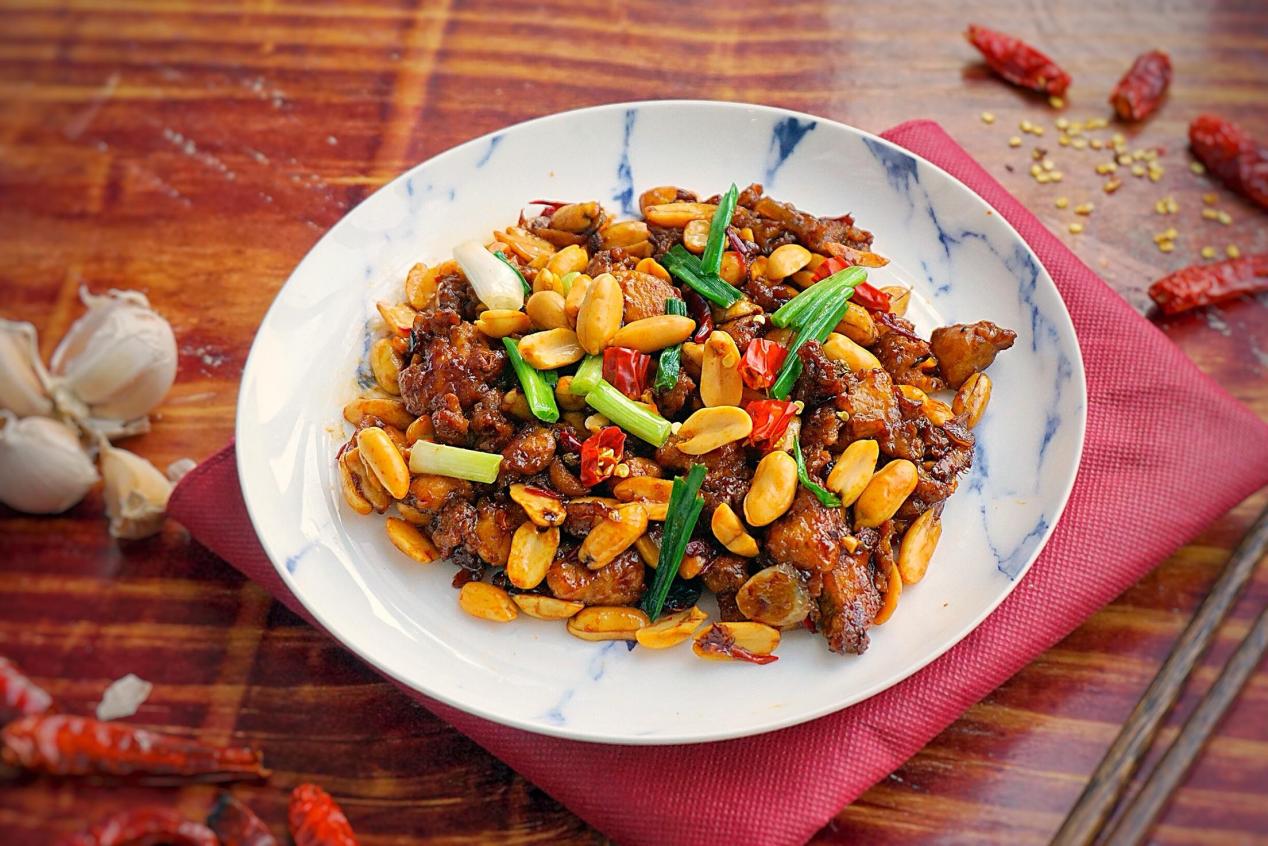Kung Pao Chicken is a world-renowned Chinese dish originating from the rich culinary tradition of Sichuan cuisine. Known for its perfect balance of sweet, sour, spicy, and savory flavors, this dish has earned a special place in both Chinese and international gastronomy. With its tender chicken pieces, crunchy peanuts, and vibrant sauce, Kung Pao Chicken offers an unforgettable taste experience. This article delves into the history, preparation, and taste of Kung Pao Chicken, providing a comprehensive guide to this iconic dish.
1. The Origins and History of Kung Pao Chicken
Kung Pao Chickenhas its origins in the Qing Dynasty and is traditionally associated with a Chinese official named Ding Baozhen. Ding Baozhen served as the governor of Sichuan province and was known for his fondness for spicy and flavorful dishes. One of his favorite recipes included stir-fried diced chicken with peanuts, dried chili peppers, and a tangy sauce. He held the honorary title "Gongbao," meaning "Palace Guardian," and thus the dish he loved came to be known as "Kung Pao Chicken."

Over time, this dish spread beyond Sichuan province, gaining popularity throughout China and evolving into different regional variations. While the Sichuan version is known for its bold, spicy, and numbing flavors from the use of dried chilies and Sichuan peppercorns, other regions like Beijing, Shandong, and Guizhou have developed their own versions of the dish, each with unique local twists.
2. Traditional Kung Pao Chicken Recipe
While there are many adaptations of Kung Pao Chicken, the traditional Sichuan version requires attention to detail, proper ingredient selection, and mastery of stir-frying techniques. Below is a step-by-step guide to making authentic Kung Pao Chicken.
2.1 Ingredients
- Main Ingredients:
- Chicken breast or thigh meat (about 300g)
- Peanuts (50g, toasted)
- Dried chili peppers (8-12, depending on heat preference)
- Sichuan peppercorns (1 tsp)
- Spring onions (cut into 2-3 cm pieces)
- Garlic and ginger (minced)
- Marinade:
- Soy sauce (1 tbsp)
- Rice wine or Shaoxing wine (1 tbsp)
- Cornstarch (1 tsp)
- Kung Pao Sauce:
- Soy sauce (2 tbsp)
- Dark soy sauce (1 tsp)
- Vinegar (1 tbsp, Chinese black vinegar preferred)
- Sugar (1 tbsp)
- Water (2 tbsp)
- Cornstarch (1 tsp)

2.2 Chicken Marinade
The chicken should be diced into small, uniform cubes for even cooking. To tenderize the chicken and give it a smooth texture, marinate it with soy sauce, rice wine, and a bit of cornstarch. The cornstarch coating helps to seal in the chicken’s moisture, ensuring a tender and juicy bite after stir-frying. Marinate for about 15-20 minutes.
2.3 Preparing the Ingredients
- Toasted Peanuts: Fry the peanuts until golden and crispy. Set aside to cool.
- Chili Peppers and Sichuan Peppercorns: Cut dried chili peppers into segments and remove the seeds if you prefer a milder dish. The Sichuan peppercorns contribute the distinctive "numbing" sensation characteristic of Sichuan cuisine.
2.4 Preparing the Kung Pao Sauce
The sauce is the soul of Kung Pao Chicken. Mix soy sauce, dark soy sauce, vinegar, sugar, and a little water in a bowl. Add cornstarch to slightly thicken the sauce. The key to the sauce is balancing the sweet, sour, and savory flavors, with a hint of heat from the chili oil produced during cooking.
2.5 Cooking Steps
1. Fry the Aromatics: Heat oil in a wok over medium-high heat. When the oil is hot, add the Sichuan peppercorns and dried chilies. Stir-fry until fragrant, but be careful not to burn them, as this can make the dish bitter.
2. Stir-fry the Chicken: Add the marinated chicken to the wok and stir-fry until the chicken turns golden on the outside but remains tender on the inside. Remove the chicken from the wok and set it aside.
3. Combine and Cook: Add minced garlic and ginger to the wok, then stir in the sauce. Once the sauce begins to thicken, return the chicken to the wok and stir to coat the pieces evenly. Finally, add the peanuts and spring onions, giving the dish a final stir before removing it from the heat.

2.6 Serving
Kung Pao Chicken is typically served hot, often accompanied by steamed rice to soak up the flavorful sauce. The contrast of textures between the tender chicken, crunchy peanuts, and soft onions, combined with the bold sauce, creates a dynamic and satisfying dish.
3. The Flavor Profile of Kung Pao Chicken
Kung Pao Chicken is celebrated for its complex and well-balanced flavor profile, which incorporates a mix of sweetness, sourness, savoriness, and spiciness. Each ingredient and seasoning plays a key role in crafting the final taste experience.
3.1 The Spicy Heat
At the heart of Kung Pao Chicken’s flavor is the heat from dried chili peppers. While the dish is not overwhelmingly spicy, the dried chilies provide a noticeable warmth that complements the other flavors. The numbing sensation from the Sichuan peppercorns adds another dimension, creating a tingling feeling on the palate.
3.2 Sweet and Sour Harmony
The sauce is balanced with the sweetness of sugar and the tangy acidity of vinegar. This sweet-and-sour combination cuts through the richness of the stir-fried chicken and creates a refreshing contrast to the spiciness. Properly balancing these flavors is key to achieving the authentic taste of Kung Pao Chicken.
3.3 Umami and Savory Depth
Soy sauce and dark soy sauce bring depth and umami to the dish. They contribute to the savory base of the sauce, enhancing the overall richness. The dark soy sauce also adds a slight caramelized flavor and gives the sauce a deeper color, making the dish visually appealing as well.
3.4 Textural Contrast
One of the hallmarks of Kung Pao Chicken is the contrast of textures. The chicken should be tender and juicy, while the peanuts offer a crunchy bite. The spring onions add a light freshness, and the sauce ties everything together with its slightly thick, glossy consistency.

4. Regional Variations of Kung Pao Chicken
As Kung Pao Chicken became popular across China, various regions adapted the dish to suit local tastes. While the Sichuan version remains the most famous, several regional variations have emerged.
4.1 Beijing Kung Pao Chicken
The Beijing version of Kung Pao Chicken tends to be less spicy and has a more pronounced sweetness. It often features more onions and a milder sauce, with fewer dried chili peppers and no Sichuan peppercorns. This version is favored by those who enjoy a sweeter, less fiery take on the dish.
4.2 Guizhou Kung Pao Chicken
In Guizhou, Kung Pao Chicken is influenced by the local cuisine’s emphasis on sour flavors. The dish often incorporates a bit of Guizhou’s famous sour chili sauce, adding a tangier and slightly more fermented taste to the traditional Kung Pao profile.
4.3 Shandong Kung Pao Chicken
In Shandong, the dish typically uses chicken thigh meat, which is fattier and more tender than breast meat. The sauce tends to be more savory, with an emphasis on soy sauce and vinegar, giving the dish a richer and more robust flavor.
5. Kung Pao Chicken’s Global Appeal
Over the years, Kung Pao Chicken has transcended its Chinese origins to become a global favorite. Chinese restaurants worldwide serve various interpretations of this dish, with adaptations to suit local palates. For example, in the United States, the dish is often sweeter and less spicy to cater to Western tastes, sometimes with added vegetables like bell peppers or carrots.
Despite these modifications, the core elements of Kung Pao Chicken—chicken, peanuts, dried chilies, and a sweet-and-sour sauce—remain consistent, ensuring that the dish continues to be a beloved staple in Chinese cuisine abroad.
6. Conclusion
Kung Pao Chicken is more than just a delicious dish—it’s a testament to the complexity and depth of Chinese culinary traditions. Its unique blend of flavors and textures has made it a favorite in homes and restaurants worldwide. Whether you’re enjoying an authentic Sichuan version or a local adaptation, Kung Pao Chicken never fails to deliver a flavorful, satisfying meal. By understanding its origins, preparation techniques, and the nuances of its taste, you can better appreciate the skill and artistry that go into creating this Chinese culinary masterpiece.



